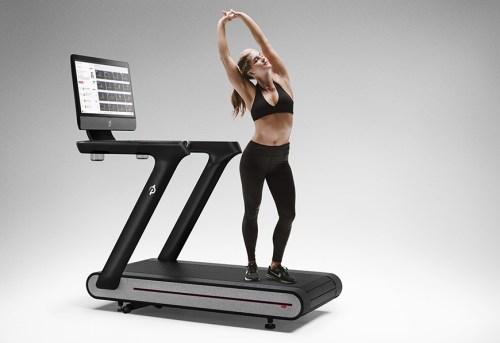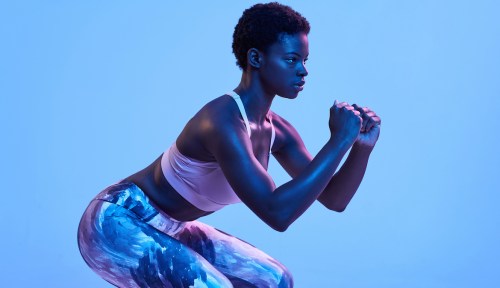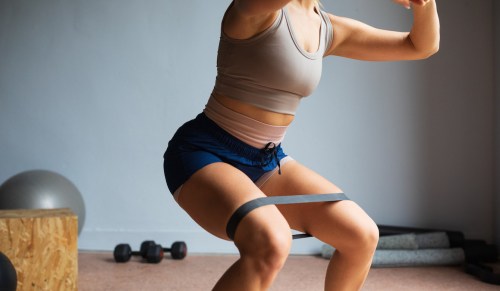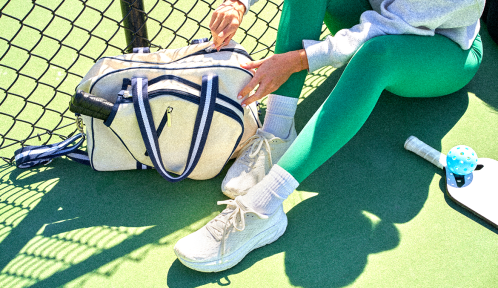Plenty of runners would rather train in rain, sleet, snow, ice, wild winds, or even an actual hurricane than resort to, gasp, the treadmill. (Trust me, I know a few and the word “dislike” puts it mildly.) But while those runners resist hopping on what they may call “the dreadmill,” others—like Peloton Tread master instructor, triathlete, and half-marathoner Rebecca Kennedy—are here to encourage careful reconsideration.
“If you’re calling it a dreadmill, you probably just haven’t had the right experience yet,” Kennedy insists. “The typical treadmills people run on aren’t easy on your joints, they’re not pleasant, and they’re not interactive.”
“I was able to keep my training consistent, and that paid off.”
Kennedy did the majority of her hill and speed training for her most-recent half marathon on a Peloton Tread—something she says gave her a major advantage come race day. “Workouts shouldn’t have to defy weather,” she says. “I was able to keep my training consistent during a crazy winter, and that paid off. Plus, I automatically eliminated all those weather-related excuses. I could get going, lock into my paces, and just run.”
Not convinced yet? Here are Kennedy’s top tips for turning the treadmill into your best running buddy.
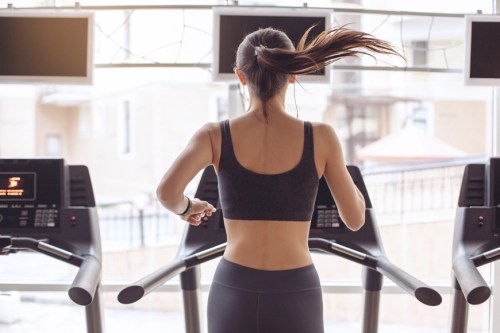
1. Check your attitude at the door
“If you approach the treadmill with a negative attitude, you’re setting yourself up for a negative experience,” Kennedy says. “Clear the slate for a second and figure out why you’re there. Then, take the name out of it: It’s not treadmill running, it’s just running.”
2. Fuel up first
“Eat something that has protein and carbohydrates at least 30 minutes before you start your workout,” she recommends. “That’s going to be the gas in your tank when you’re getting the work done.”
3. Have a specific goal in mind
“Check in with your body and know what kind of workout you need that day,” suggests the Peloton trainer. “Maybe you’re up for a high-energy day, and you have 30 minutes to nail a HIIT workout. Or maybe you just did that yesterday, so today you feel like slowing down before you go hard again tomorrow. Know what your goal is and approach your workout with a very clear idea of what you’re trying to achieve.”

4. Sneakers matter
“You want to be wearing proper running sneakers, not the old tennis shoes you found in the back of your closet,” Kennedy says. “Make sure they have the right support for your foot, and remember that everyone’s arch is different. Go to a running store for help getting fitted for the right shoes. It’ll make your experience so much better.”
5. Warm up
“This sounds pretty intuitive—of course you’re going to warm up before a run, right?—but I promise, it’s a game-changer,” Kennedy says. “Do a dynamic warm-up before you even step on the treadmill, or do them on the treadmill at a super slow pace. Think walking high knees and arm circles to warm up the glutes, hips, calves, and shins, to start getting your heart rate up. Or get down on the floor and do some glute bridges to activate the hamstrings and glutes. A proper warm-up will really improve your run.”
6. Workout clothes matter
“If you’re wearing a cotton T-shirt, it’s going to get pretty sweaty and heavy pretty fast,” Kennedy says. “I like to wear moisture-wicking apparel so I stay comfortable for my entire run. It won’t weigh you down or get in your way. Layers are awesome, too—you can start peeling them back as you warm up.”
And here’s what not to do the next time you’re on the treadmill. After, grab your mat and try these yoga moves that will make you a better, stronger, more flexible runner.
Sign Up for Our Daily Newsletter
Get all the latest in wellness, trends, food, fitness, beauty, and more delivered right to your inbox.
Got it, you've been added to our email list.
